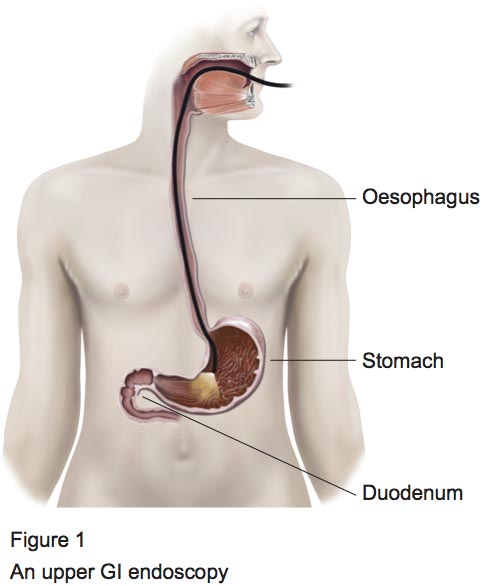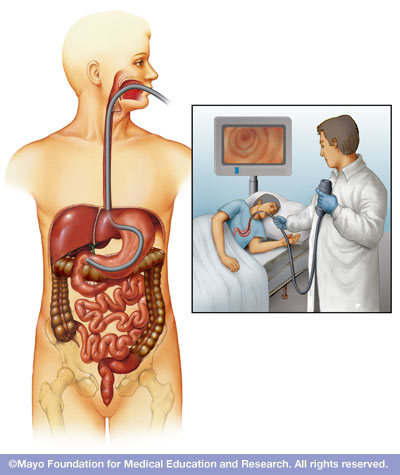Endoscopy


What is an GI Endoscopy ?
An upper GI Endoscopy is a procedure to diagnose and treat problems in your upper GI (Gastrointestinal) tract. The upper GI tract includes your food pipe (esophagus), stomach, and the first part of your small intestine (the duodenum). This procedure is done using a long, flexible tube called and an endoscope. The tube has a tiny light and video camera on one end. The tube is put into your mouth and throat. Then it is slowly pushed through your esophagus and stomach, and into your duodenum. Video images from the tube are seen on a monitor.
The most common reasons for upper Endoscopy include:
- Difficulty swallowing: food/liquids getting stuck in the esophagus during.
- Iron deficiency anemia (low blood count associated with a low iron level in the blood) in someone who has had no visible bleeding.
- Upper gastrointestinal (GI) bleeding (vomiting blood or blood found in the stool that originated from the upper part of the GI tract). Bleeding can be treated during the endoscopy.
- GERD or gastroesophageal reflux disease (often called heartburn).
- Unexplained discomfort or pain in the upper abdomen.
- Persistent nausea vomiting.
What will happen during the tests ?
- You will be asked to lie on your left side. This provides the best view of the stomach.
- Your blood pressure, pulse, breathing, and blood oxygen levels will be monitored during the test. An intravenous (IV) needle will be placed in your arm to provide a sedative. Sedatives help you stay relaxed and comfortable during the procedure. In some cases, the procedure can be performed without sedation. You will be given a liquid anesthetic on the back of your throat.
- The doctor will carefully feed the endoscope down your esophagus and into your stomach and duodenum. A small camera mounted on the endoscope will send a video image to a monitor, allowing close examination of the lining of your upper GI tract.
- Air or carbon dioxide gas is gently introduced through the endoscope to open the esophagus, stomach, and intestine, allowing the endoscope to be passed through these areas and improving the doctor's ability to see completely. The air may give you some discomfort or pressure. This is not harmful, this feeling is normal and should go away soon after the test.
- The procedure typically takes 15 to 30 minutes, depending on your situation.
- Persistent nausea vomiting.
If you have constant complaints to your family doctor about digestive problems such as frequent abdominal pain, nausea, or heartburn then something is affecting your digestive system.
Your doctor may recommend some lifestyle changes, or treat the condition with over-the-counter or prescription drugs to prevent your symptoms from worsening.
